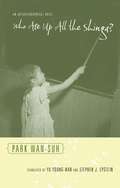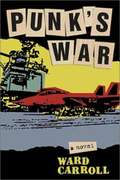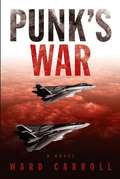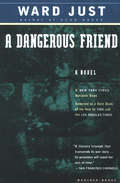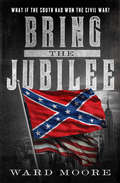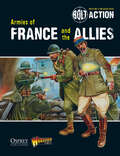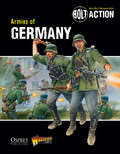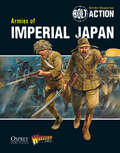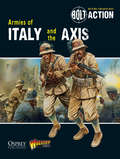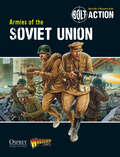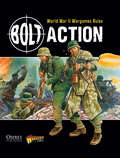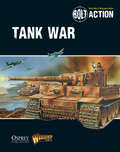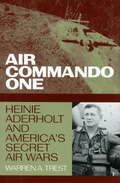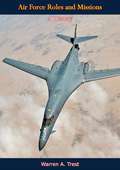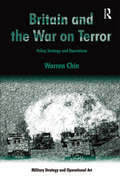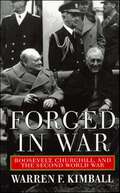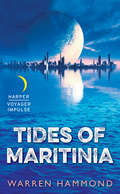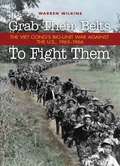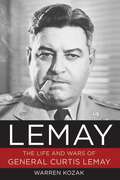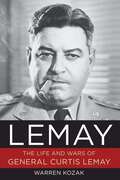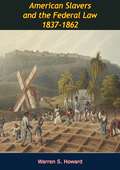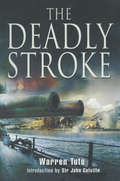- Table View
- List View
Who Ate Up All the Shinga?: An Autobiographical Novel (Weatherhead Books on Asia)
by Wan-Suh ParkPark Wan-suh is a best-selling and award-winning writer whose work has been widely translated and published throughout the world. Who Ate Up All the Shinga? is an extraordinary account of her experiences growing up during the Japanese occupation of Korea and the Korean War, a time of great oppression, deprivation, and social and political instability.Park Wan-suh was born in 1931 in a small village near Kaesong, a protected hamlet of no more than twenty families. Park was raised believing that "no matter how many hills and brooks you crossed, the whole world was Korea and everyone in it was Korean." But then the tendrils of the Japanese occupation, which had already worked their way through much of Korean society before her birth, began to encroach on Park's idyll, complicating her day-to-day life. With acerbic wit and brilliant insight, Park describes the characters and events that came to shape her young life, portraying the pervasive ways in which collaboration, assimilation, and resistance intertwined within the Korean social fabric before the outbreak of war. Most absorbing is Park's portrait of her mother, a sharp and resourceful widow who both resisted and conformed to stricture, becoming an enigmatic role model for her struggling daughter. Balancing period detail with universal themes, Park weaves a captivating tale that charms, moves, and wholly engrosses.
Punk's War
by Ward CarrollAn F-14 aviator takes his readers into the cockpits, ready-rooms, and bunkrooms of today's Navy to show what it's like to fight in a time of so-called peace.
Punk's War
by Ward CarrollAn F-14 aviator takes his readers into the cockpits, ready-rooms, and bunkrooms of today's Navy to show what it's like to fight in a time of so-called peace. From the opening chapter where a Tomcat fighter squadron's commanding officer botches an intercept of a hostile Iranian F-4 to the final uplifting scene, his novel reveals the inner workings of the military as only an insider can. It is a thriller without an airshow groupie's pretense, a fighter pilot's story as honest as it is riveting. The action is gripping and authentic, yet it punctuates rather than drives the plot. Seldom has fiction been so real.Punk's War is part adventure tale, part introspective commentary. Adopting the tone of the quixotic lieutenants who populate its pages, the novel helps us understand the pressures on this new generation of warfighters. Along the way we are introduced to an engaging cast of characters: a self-centered careerist squadron commander hell-bent on fixing his tainted professional reputation; a reluctant air-wing commander more suited for life within the walls of the Pentagon than on a flight deck at sea; a battle-group commander reared in the art of driving ships, but thrust into the snap decision matrix of supersonic jets; and a host of junior officers. Seeking only the ideals they were promised, these technology-savvy aviators are products of pop culture, unimpressed by rank for its own sake and unresponsive to petitions in the name of the profession's lofty mottos. Unlike other books about the business of flying from aircraft carriers, this novel provides serious food for thought about leadership and retention--what motivates young people to keep doing what they do despite the dangers, disappointments, and personal sacrifices. Best-selling novelist Stephen Coonts describes the author as Tom Clancy crossed with Joseph Heller, his book as a refreshing twist on the military thriller.
A Dangerous Friend: A Novel
by Ward JustNAMED A BEST BOOK OF THE YEAR BY TIME AND THE LOS ANGELES TIMES • A NEW YORK TIMES NOTABLE BOOK&“A literary triumph that transcends its war story. . . its greatness will stand the test of time.&”—San Francisco Chronicle &“A master American novelist.&” —Vanity FairA Dangerous Friend is a thrilling narrative roiling with intrigue, mayhem, and betrayal. Here is the story of conscience and its consequences among those for whom Vietnam was neither the right fight nor the wrong fight but the only fight. The exotic tropical surroundings, the coarsening and corrupting effects of a colonial regime, the visionary delusions of the American democratizers, all play their part. A few civilians with bright minds and sunny intentions want to reform Vietnam—but the Vietnam they see isn't the Vietnam that is. Sydney Parade, a political scientist, has left home and family in an effort to become part of something larger than himself, a foreign-aid operation in Saigon. Even before he arrives, he encounters French and Americans who reveal to him the unsettling depths of a conflict he thought he understood—and in Saigon, the Vietnamese add yet another dimension. Before long, the rampant missteps and misplaced ideals trap Parade and others in a moral crossfire.
Exiles In The Garden
by Ward Just"One of the most astute writers of American fiction" (New York Times Book Review) delivers the resonant story of Alec Malone, a senator’s son who rejects the family business of politics for a career as a newspaper photographer. Alec and his Swiss wife, Lucia, settle in Georgetown next door to a couple whose émigré gatherings in their garden remind Lucia of all the things Americans are not. She leaves Alec as his career founders on his refusal of an assignment to cover the Vietnam War — a slyly subversive fictional choice from Ward Just, who was himself a renowned war correspondent. At the center of the novel is Alec’s unforeseen reckoning with Lucia’s long-absent father, Andre Duran, a Czech living out the end of his life in a hostel called Goya House. Duran’s career as an adventurer and antifascist commando is everything Alec’s is not. The encounter forces Alec to confront just how different a life where things — "terrible things, terrible things" — happen is from a life where nothing much happens at all. Once again, "Ward Just writes the kind of books they say no one writes anymore: smart, well-crafted narratives — wise to the ways of the world — that use fiction to show us how we live" (Joseph Kanon, Los Angeles Times).
Bring the Jubilee: What if the South Had Won the Civil War?
by Ward MooreWhat if the South Had Won the Civil War?The landmark alternate history novel by &“one of the best American writers&” (Ray Bradbury). In the world of this novel, said to be an inspiration for Philip K. Dick&’s The Man in the High Castle, the Confederacy has triumphed and become an imperialist nation. What is left of the United States has been drained of its resources and is trapped in a depression. Hodge, a young man living in a village in rural New York with his parents, decides to head to the city to escape his otherwise inevitable future of poverty and indentured servitude. But the specter of war between the Confederacy and the other great global power, the German Union, haunts the entire region, and a nationalist terrorist group has other plans for Hodge. Before long, he is swept up in the politics of the day and becomes involved with a beautiful physicist who is working on a machine intended to change his fate—and the fate of the world. Long before Harry Turtledove&’s The Guns of the South, Bring the Jubilee was the first novel to pose the question &“What if the South had won the Civil War?&” A counterfactual classic, it was included in renowned science fiction editor David Pringle&’s list of the 100 Best Science Fiction Novels. This ebook features an illustrated biography of Ward Moore including rare images from the author&’s estate.
Bolt Action: Armies of France and the Allies
by Warlord GamesWorld War II was truly a 'world' war, and many nations joined the fight against Germany and the Axis. This latest supplement for Bolt Action covers the armies of France, Poland, Czechoslovakia, Denmark, Norway, Holland and Belgium that stood against the German Blitzkrieg, as well as the resistance forces that sprung up in the aftermath of occupation, and other Allied powers, such as China, in the East.
Bolt Action: Armies of Germany
by Warlord GamesHitler's Nazi German blitzkrieg swept across Poland, Norway, Denmark, France, Yugoslavia, Greece, North Africa, and Russia with Panzers, Stukas, Fallschirmjaeger, infantry, and artillery. This book provides Bolt Action players with all of the information they need to field the military forces of Nazi Germany. Detailed army lists allow players to construct German armies for any theatre and any year of the war, including the early campaigns in Poland and France, the dusty tank war in the North African desert, the bloody battles on the Eastern Front, and the final defence of Normandy, occupied France and Germany itself. With dozens of different unit types including Fallschirmjager, Waffen-SS, and the dreaded Tiger tank, players can assemble a huge variety of troops with which to battle their opponents.
Bolt Action: Armies of Imperial Japan
by Warlord GamesFollowing the assault on Pearl Harbor, the Imperial Japanese military saw action across Asia, from the capture and defense of the islands of the Pacific to the occupation of territory in China and Burma. With this latest supplement for Bolt Action, players have all the information they need to build a force of the Emperor's fanatically loyal troops and campaign through some of the most brutal battles of the war.
Bolt Action: Armies of Italy and the Axis
by Warlord GamesWhile many nations flocked to the side of the Allies, others joined forces with Germany as part of the Axis. This volume is the definitive guide to the armies of Italy, Hungary, Slovakia, Croatia and Finland. Refight the Winter War against the Soviets, hold back the British in North Africa, or help shore up the German offensives on the Eastern Front with this latest supplement for Bolt Action.
Bolt Action: Armies of the Soviet Union
by Warlord GamesStalin's Russian Winter War against Finland, and his World War II campaigns on Nazi Germany's eastern front (around Kiev, Lenningrad, Moscow, Kharkov, Stalingrad, Kursk, Byelorussia, the Balkans, East Prussia, Warsaw, Hungary, and Berlin) constitute the largest land war in world history in terms of the number of troops engaged, and is also impressive in terms of the vast distances fought over. Russia took 20 million military and 20 million civilian casualties during a brutal four year war, and the Germans lost over 2 million military and 2 million civilian casualties as well. Bolt Action allows gamers to recreate a small part of this titanic struggle on the table-top.
Bolt Action: World War II Wargames Rules
by Warlord GamesUsing miniature soldiers, tanks and terrain, you can fight battles in the shattered towns of occupied France, the barren deserts of North Africa, and even the sweltering jungles of the Pacific. Written by veteran game designers Alessio Cavatore and Rick Priestley, Bolt Action provides all the rules needed to bring the great battles of World War II to your tabletop. Players get to decide which of the major or minor World War II powers they would like to represent, and then construct their armies from the lists provided. Army options are almost limitless, allowing you to build the kind of army that most appeals to your style of play, from heavily armored tank forces to lightly armed, but highly skilled. The choice is yours. Created as a joint project between Warlord Games, the premiere historical miniatures company, and Osprey Publishing, the leading independent military history publisher, Bolt Action is sure to be the most popular new wargame on the market.
Tank War
by Warlord GamesTank War, the new supplement for Bolt Action, gives players the option to expand their games to a whole new level - armored warfare. Recreate such great engagements as the battle of Kursk with the scenarios, army options and special rules found in this book. Whether you want to add more armour to your existing armies or build an entirely armoured force, Tank War has you covered.
Air Commando One
by Warren A. TrestAir-dropping agents deep behind enemy lines in clandestine night missions during the Korean War, commanding secret flights into Tibet in 1960 to support the anticommunist guerilla uprising, participating in plans for the 1962 Bay of Pigs invasion--even before the escalation of the Vietnam War, Brigadier General Harry C. "Heinie" Aderholt worked at the heart of both the U.S. Air Force and CIA special operations worldwide. In 1964 he became commander of the famed First Air Commando Wing, fighting to build up special operations capabilities among the American and South Vietnamese airmen. In 1966 and 1967 he and his men set the record for interdicting the flow of enemy trucks over the Ho Chi Minh Trail in Laos and North Vietnam.Drawing on official records, personal papers, and interviews with Aderholt and many who worked with him, Air Force historian Warren A. Trest details the life and career of this charismatic, unconventional military leader who has become a legend of the Cold War Air Force. He tells how Aderholt's vigorous support of low-flying, propeller-driven aircraft and nonnuclear munitions pitted him against his superiors, who were steeped in doctrines of massive retaliation and "higher and faster" tactical air power. In the mid-1960s Aderholt's clash with Seventh Air Force Commander General William W. Momyer reflected a schism that still exists between the traditional Air Force and its unconventional special operations wings. The book also integrates U.S. Air Force and CIA accounts of some of the most pivotal events of the past fifty years.
Air Force Roles and Missions: A History
by Warren A. TrestTraces the usage of and meaning given to the terms "roles and missions" relating to the armed forces and particularly to the United States Air Force, from the birth of military aviation in 1907 to the end of the twentieth century.In particular, author Warren A. Trest explores the origins of the battles over post-World War II roles and missions between the Air Force, Army and the Navy, particularly in reference to "forward presence". Trest also explains the Air Force’s unique institutional development, as use of air bombardment and surveillance grew in sophistication and importance, reinforcing the need for treating air power as a separate service. Included is a review of mission and role identification and separation attempts by Congress and various commissions.—Print ed.
Britain and the War on Terror: Policy, Strategy and Operations (Military Strategy and Operational Art)
by Warren ChinWhy did Britain come to play such a prominent role in the war on terror and why did the military instrument come to be the dominant theme in the British prosecution of what was an ideological and political struggle? This book is an analysis of Britain’s war against Al Qaeda and the phenomenon of international terrorism which marked a paradigm shift in the nature and conduct of war in the twenty-first century. At the heart of the book is an attempt to understand why Britain, which possessed a wealth of experience in the conduct of counterterrorism, counterinsurgency and small wars, developed a strategic and operational design to defeat the Islamist threat which proved to be deeply flawed. In addressing this question the book explores the complex intellectual, doctrinal and geopolitical challenge posed by Al Qaeda and international terrorism and how and why the British response took the form that it did. In conducting this analysis the book raises important questions about the assumptions and perceptions of those in government who led the UK into this conflict, the nature of the civil military relationship in Britain and how well it functioned, and finally the competence of its security forces in being able to deal with this threat both domestically and overseas.
Forged in War: Roosevelt, Churchill, and the Second World War
by Warren F. KimballWorld War II created the union between Franklin Roosevelt and Winston Churchill, molding it from start to finish, while the partnership itself shaped many of the most significant moments of the war and the peace that followed. Their connection was truly forged in war. Roosevelt and Churchill continue to fascinate both the World War II generation and those who have grown up in the world formed by that struggle. Here is an inside look at their relationship and the politics, strategy, and diplomacy of the British-American alliance. Warren F. Kimball's lively analysis of these larger-than-life figures shows how they were at the same time realists and idealists, consistent and inconsistent, calculating and impulsive. The result is an unforgettable narrative.
Tides of Maritinia
by Warren HammondMaritinia is at the far edge of the Empire, a planet with little economic value in the Sire's sphere of influence. And it's just rebelled.The people of Maritinia believe the Empire will not care that they've broken free. But the Empire is built on the belief that if an insignificant planet can revolt, then other, more important planets might follow suit.So the Empire sends an agent to Maritinia with a mission: assassinate and replace one of the conspirators, and do enough to sow discord that when the soldiers do land, any opposition will be quickly crushed.Thus Jakob finds himself immersed in the inner circle of the madman who led the rebellion. A raw recruit with only his political officer--a separate consciousness inserted into his brain--to speak with, Jakob is out of his element as an operative. And while he falls deeper into the conspiracy, he begins to question everything: the despotic admiral in charge of the coup, his feelings for a native woman, and--most troublingly--whether he still agrees with the will of the Sire.
Grab Their Belts to Fight Them
by Warren K. WilkinsIn 1965, despite pronounced disadvantages in firepower and mobility, the Communist Vietnamese endeavored to crush South Vietnam and expel the American military with a strategy for a quick and decisive victory predicated not on guerrilla but big-unit war. Warren Wilkins chronicles the formation, development, and participation of the Viet Cong in the opening phase of the big-unit war and shows how the failure of that strategy profoundly influenced the decision to launch the Tet Offensive. Unlike most books on the war, this one provides an authentic account from the Communist perspective, with the author drawing on memoirs, unit histories, and battlefield studies to reconstruct the formation and deployment of major military units, battles and campaigns, and the strategic debates that informed the big unit war.Published in cooperation with the Association of the United States Army
LeMay: The Life and Wars of General Curtis LeMay
by Warren KozakKozak’s biography of U.S. Air Force General Curtis E. LeMay (1906–1990) won’t convert those utterly convinced that he was a bomb-happy maniac. The more open-minded, however, will find in it a broader perspective on this controversial officer than we have had elsewhere. His outstanding competence as leader and organizer of strategic airpower in World War II and during the cold war is convincingly presented; so are his limitations in the Pentagon and his poor judgment in being George Wallace’s running mate in 1968.
LeMay: The Life and Wars of General Curtis LeMay
by Warren KozakKozak's biography of U.S. Air Force General Curtis E. LeMay (1906-1990) won't convert those utterly convinced that he was a bomb-happy maniac. The more open-minded, however, will find in it a broader perspective on this controversial officer than we have had elsewhere. His outstanding competence as leader and organizer of strategic airpower in World War II and during the cold war is convincingly presented; so are his limitations in the Pentagon and his poor judgment in being George Wallace's running mate in 1968. Kozak suggests that LeMay was utterly dedicated to the mission of destroying his country's enemies and to the men under his command charged with carrying out that mission. This led to what can only be called a certain lack of the social graces and a good many of what might charitably be called misinterpretations of where LeMay's patriotism led him. A book that definitely belongs in aviation and modern military history collections.
American Slavers and the Federal Law 1837-1862
by Warren S. HowardDetailed study of the American government's inability to deal with flagrant violations of federal laws forbidding the use of American citizens, vessels, and port facilities in the international slave trade which flourished in the 1840s and 1850s.
Naval Aviation in the Korean War: Aircraft, Ships and Men
by Warren ThompsonA history of the conflict in Korea with an emphasis on the crucial role of aviation. This in-depth history covers the role of US aircraft carriers and aircraft in stopping the North Korean initial push to the south; their role in the famous Inchon Landing and Pusan Perimeter break out; naval operations during the Marines&’ Chosin Reservoir march to the sea in December 1950; and the stabilization of the front lines after the Chinese entered the war during 1951. At this time, the emphasis for naval air operations was centered on interdiction behind the lines. The focus was on trying to stop road and rail traffic from resupplying the communist troops and allowing them to build up to a major offensive. Also described is the entry of the F2H Banshee into carrier operations, which gave the US four major types of aircraft with which to wage the war. During 1952, most carrier air groups spent their time off the coast of North Korea while hitting targets up along the Yalu River, putting them well within the range of MiG-15s. Navy F9F Panthers were used as top cover, while the Corsairs and Skyraiders went after major targets such as the dam complexes upriver and marshaling yards north of Pyongyang. During 1953, naval air operations were stepped up in an effort to get the communists back to the truce talks. The number of MiG-15s had grown to a figure many times that of the UN for overhead protection; the deep missions were more dangerous than ever; and the Chinese brought in state-of-the-art antiaircraft automatic weapons. This comprehensive book brings you into the action as the stakes get higher and higher before the conflict eventually draws to a close.
The Deadly Stroke
by Warren TuteA history of World War II&’s Battle of Mers-el-Kebir, in which Churchill ordered the sinking of the French fleet to keep it from the Nazis. With the defeat of the French forces by the Germans, Winston Churchill was determined that the French fleet would not fall into German hands, and to that end he ordered that every French ship from Alexandria to Martinique, Portsmouth to Dakar either surrender or be seized. Only those in Algeria committed to the Vichy government refused. In a tragic and ironic battle, the British sank the French fleet at Oran, the author explores in detail the events surrounding this incident.With an introduction by Sir John Colville
First Great Triumph: How Five Americans Made Their Country a World Power
by Warren ZimmermannAmerican history around 1900 with a focus on five figures.
